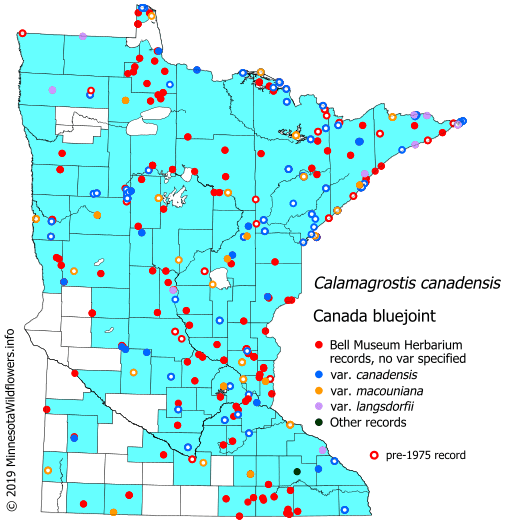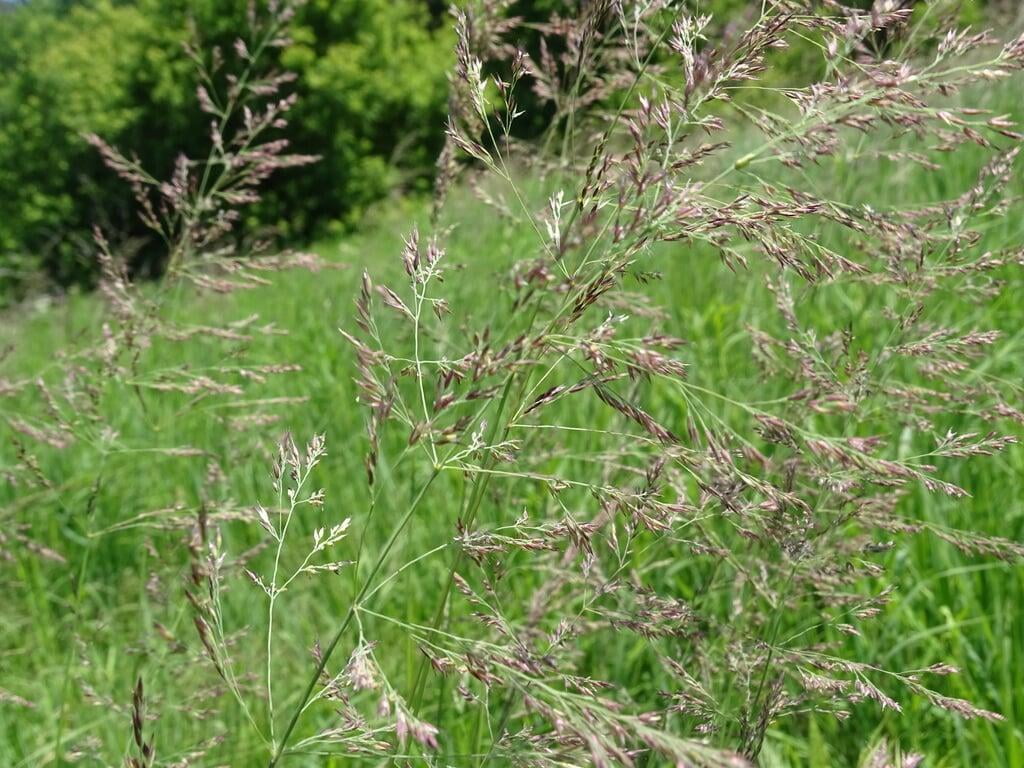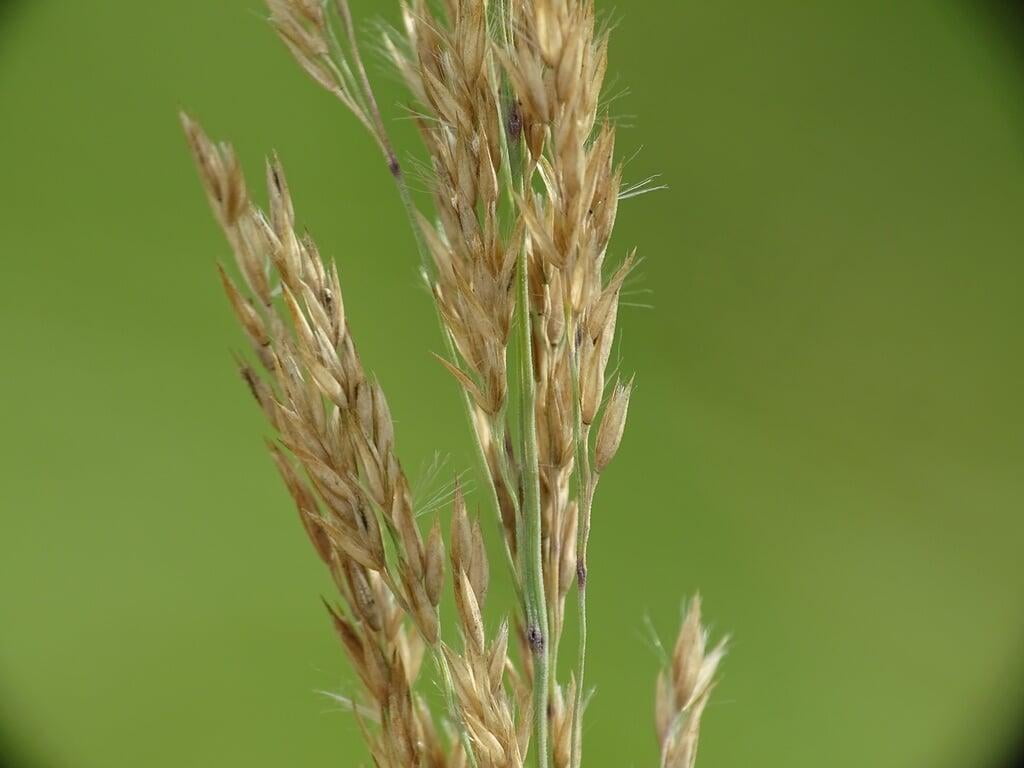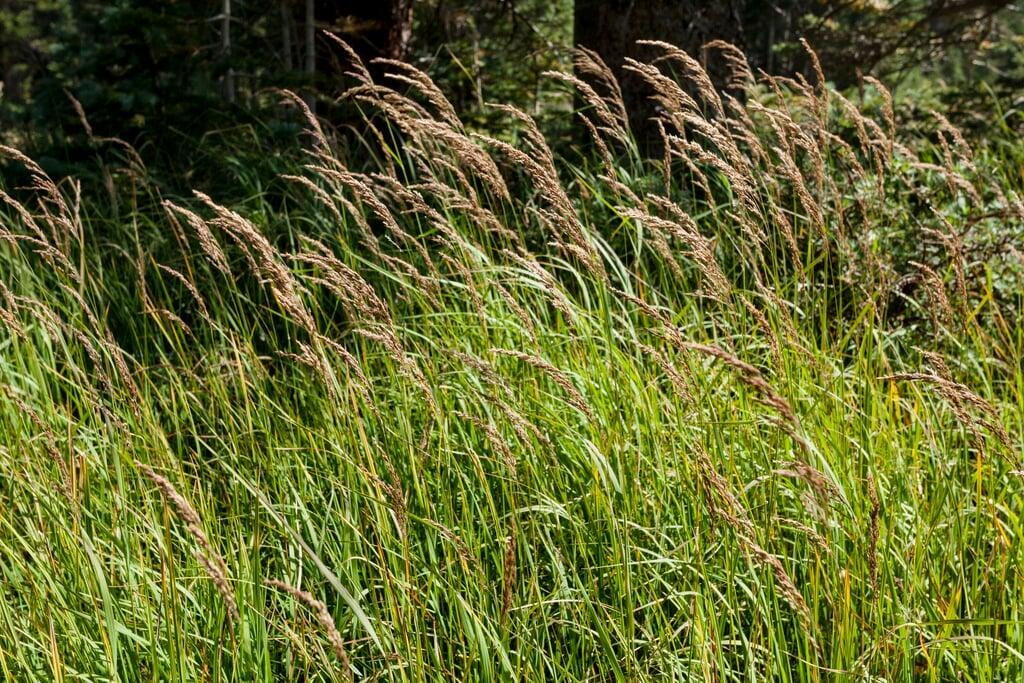Calamagrostis canadensis
Blue joint grass Description:
Calamagrostis canadensis, commonly known as blue joint grass, is a cool-season, perennial grass species native to North America. It is a wetland species that typically grows in marshes, wet meadows, and along stream banks.
Blue joint grass is an ornamental grass that can grow up to 5 feet tall and has attractive, purplish seed heads. It provides valuable wildlife habitat, supporting a variety of insects, birds, and small mammals. The grass is also used for forage and is important for biomass production.
Calamagrostis canadensis is well-suited to a range of ecological restoration and management applications, including soil stabilization, erosion control, and reclamation. As a wetland species, it is particularly useful for restoring wetland areas that have been degraded or destroyed.
In addition to its ecological benefits, blue joint grass is also popular in landscaping applications, where it is valued for its striking appearance and adaptability. It is a hardy and versatile grass species that can tolerate a wide range of growing conditions.
Overall, Calamagrostis canadensis is an important and versatile grass species that provides valuable ecological and landscaping benefits, particularly in wetland areas.
Native Range:
Blue joint grass is found growing across the United States with the exception of most of the Southeastern states. In Minnesota, Blue joint grass can be found growing in nearly all regions of the state.
Standard Plant Information:
Plant height: 2' - 5'
Fruiting time: July - August
Preferred habitat: Does well in part shade to full sun with moist to wet soil. Often found in swales, shores, wet meadows, marshes, and bogs.
Sowing:
For most homeowners, the best option is to scatter seed on the ground by hand broadcasting at a minimum of 15-16 pls lbs per acre. For even coverage, we recommend that you broadcast seed in perpendicular rows across the site to ensure even coverage.
Planting:
Simply dig a hole in the soil slightly larger than the plant’s roots. Ensure that the soil line of the plant is maintained during the transfer (i.e. the plant should be at the same level with the ground as it was in the pot). Pack any loose dirt back around the plant and make sure you water it well the same day to ensure it has the best chance of survival.











